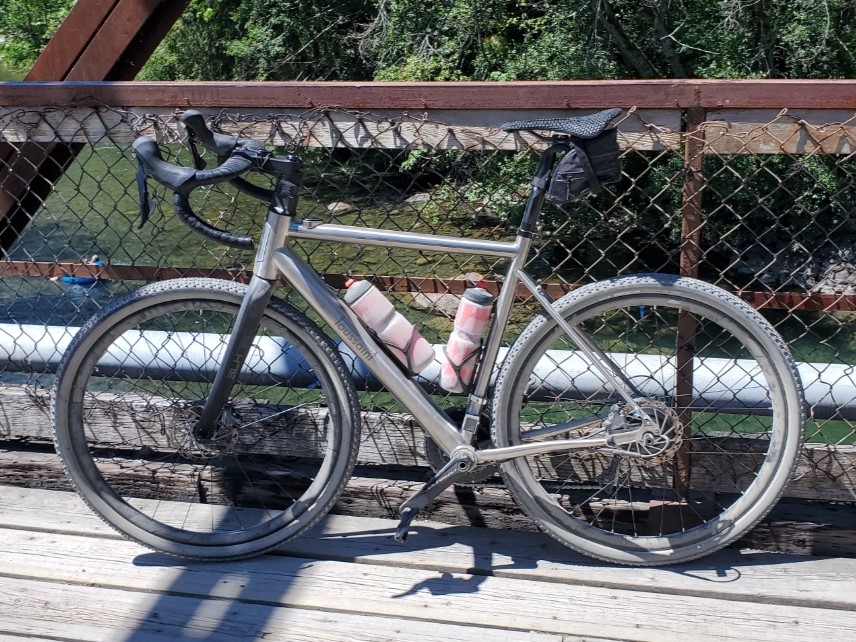
For cycling enthusiasts who are interested in Le Taureau Titanium e-bike with the FSA E-System, a recurring question takes center stage: “How far can I journey on a single battery charge?” This query beckons us to explore the intricate interplay of influencing factors, the divergence of road versus gravel riding, the prowess of eco mode, and the tactical use of assistance levels. In this article, we’ll unravel the core components that shape cycling range, dissect the implications of varied riding types, illuminate the benefits of eco mode, and scrutinize real-life rides to calculate the maximum achievable range for each situation.
The Influential Factors
To truly grasp the expected cycling range with the FSA E-System, it’s vital to comprehend the key factors that hold sway:
1. Bike and Rider Weight: The total weight of the bike and rider collectively affects the energy needed for propulsion. Heavier loads necessitate more power, potentially resulting in a diminished range.
2. Tire Type and Pressure: Tire choice and pressure dictate rolling resistance. Broader tires and lower pressure could elevate resistance, potentially impacting range.
3. Average Speed: Riding velocity corresponds to wind resistance and energy expenditure. Higher speeds often translate to heightened energy consumption.
4. Wind Conditions: Challenging headwinds can escalate energy requirements, compelling greater motor output. Conversely, tailwinds can offer a favorable impact on range.
5. Topography: Uphill sections demand augmented energy input, while downhill stretches can contribute to battery regeneration through regenerative braking.
6. Temperature: Battery efficiency is affected by extreme temperatures. Optimal performance is usually attained in temperate weather conditions.
7. Assist Level: FSA E-System offers five assist levels. Eco Mode (Level 1) provides no assistance, while Levels 2-5 enhance assistance by increasing the motor’s watt output. Higher assist levels correlate with higher energy consumption.
8. Rider’s Ability to Produce Watts: The rider’s physical ability to produce watts of power plays a crucial role. A stronger rider can contribute more to the pedaling effort, potentially reducing the reliance on the motor and conserving battery power.
9. Riding Style: A more aggressive riding style characterized by frequent acceleration and braking can lead to faster battery depletion compared to a smoother riding approach.
Road vs. Gravel Riding
The type of terrain navigated exerts a profound influence on the FSA E-System’s potential range:
Road Riding: Smooth roads with minimal elevation fluctuations generally yield a longer range. Reduced rolling resistance and uniform terrain foster efficient energy usage. Aligning the assist level with the terrain’s contours can optimize battery consumption.
Gravel Riding: Explorations off the beaten path encompass diverse terrains, including gravel, dirt, and uneven surfaces. While the assist system proves invaluable, energy demands typically escalate due to the unpredictable landscape and potential ascents. Employing strategic assist application becomes pivotal in extending range during gravel endeavors.
Unleashing Eco Mode and Strategic Assist Application
Eco mode is the energy-savvy choice within the FSA E-System as this mode provides no assistance and obviously extends battery life and, consequently, range potential. However, it’s important to recognize that Eco mode is not as much fun especially when tackling steep gradients or contending with formidable headwinds.
Strategic Assist Application encourages riders to employ the assist system judiciously. Rather than relying on the motor continuously, riders can selectively engage it during challenging segments or moments of fatigue. This strategic approach can significantly amplify the distance traversable on a single battery charge.
Real-Life Examples: Refining Maximum Range Estimation
Let’s delve into the specifics of two real life example rides and refine the calculation for the potential maximum cycling range:
1st Ride Data: Gravel Ride with Continuous Assist Level 2
- Distance: 66 km
- Ascent: 376 m
- Ride Time: 2 hours 50 minutes
- Average Speed: 23.2 kph
- Temperature Range: 26°C to 33°C, average 28.2°C
- Battery Charge Remaining after 66 km: 29%

In this case, the ride primarily consumed 70% of the battery over 66 km with assist level 2. With only 19% of battery capacity left, assuming the rider continues using assist level 2, the range would likely be limited to an additional 17-18 km. Therefore, the refined maximum range estimation for a similar gravel ride would be approximately 83-84 km.
2nd Ride Data: Road Ride with Strategic Assist
- Distance: 85.32 km
- Ascent: 766 m
- Ride Time: 3 hours 21 minutes
- Average Speed: 25.4 kph
- Temperature Range: 18°C to 25°C, average 20.3°C
- Battery Charge Remaining after 85.32 km: 67%

The second ride provides a glimpse into the potential of eco mode and strategic assist application. Over primarily paved roads, the ride covered significant distance and ascent while preserving battery life. With only 33% of battery capacity utilized over 85.32 km, the projected maximum range for a similar paved journey, assuming the rider doesn’t fatigue, could exceed 150 km.
Conclusion
The journey to ascertain the cycling range attainable with the FSA E-System involves a comprehensive understanding of multiple variables, encompassing weight, tire specifics, average speed, wind dynamics, terrain, temperature, and the chosen assist level. The dichotomy between road and gravel riding furnishes valuable insights into the intricate interplay between terrain and range. The synergy of Eco mode and strategic assist application empowers riders to push their boundaries.
The real-life examples underscore the importance of a deliberate approach to riding style and assist selection. Equipped with this knowledge, riders can unlock the full potential of the FSA E-System, venturing further and conquering more demanding routes. As you embark on your electrically-enhanced explorations, internalize these factors and allow your understanding of range dynamics to amplify your cycling adventures.
